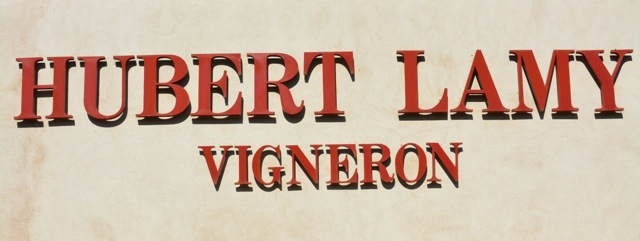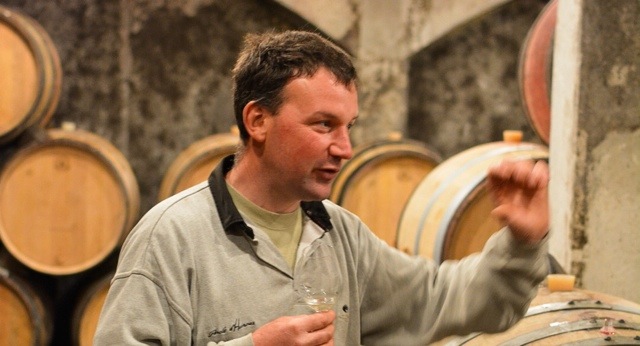It’s always very educational and inspirering to visit Domaine Hubert Lamy in Saint-Aubin.
Olivier Lamy is always testing new ways of improving his already magnificent wines, he experiments with the pruning of the vines, the number of vines planted per hectare, the closures and also with the time the wine spend on cask and tank before bottling.
Normally the Hubert Lamy wines spend 12 to 18 month og cask and tank before bottling. But Olivier is doing experiments where he keeps the wines longer on tank before bottling.
In the 2009 vintage he bottled two cuvees of Saint-Aubin Remilly .. the regular after 18 month on cask and tank, and a late bottled cuvee after 24 month on cask and tank.
We did a blind tasting the two cuvees … and the difference was quite stunning.
The tasting of the two cuvees
The regular cuvee show the somewhat weighty richness of the 2009 vintage, a quite expressive wine offering yellow orchard fruits with a nice slightly developed complexity .. hints of coffee. On the palate quite rich and slightly dense, with a good focus and energy from the mineralic terroir. The alcohol seems a bit forward. Focus and definition improves in the glass, but it is after all a 2009.
The cuvee bottled after 24 month on cask and tank seems much fresher and more focused. The bouquet is fresher with a lovely citrus infused minerality .. the fruit seems lighter and more energetic. It’s not very 2009ish … as it seems more vibrant, focused and energetic. One could argue that it’s offering less complexity at the moment … but this improves somewhat in the glass.
Bottom line .. two very different bottles of the same wine. I prefered the 24 month cuvee in this case, as it really benefits from the additional freshness.
The effect of late bottling
According to Olivier Lamy the effect of the extended time on cask/tank depends on the vintage.
In rich and hot years like 2009 the additional months on tank gives more focus and freshness to the wine, while it in lean and acidic vintages the longer elevage presumably add some weight and body to the wine.
This is however not the whole story … Olivier.. continues …
The longer elevage is possible if the grapes have good maturity and a nice acidity. Furthermore the SO2 need to be kept at a reasonable level – otherwise it will block the evolution of the wines. The cellar must be quite cold, and the use of new oak fairly low. Finally the wine must be in contact with the lees during the elevage.
According to Olivier the old Vignerons say that the wines should pass two Easters before bottling .. i.e more than 18 month.
This is very interesting indeed …



 - A true vin d’émotion – a Burgundy of passion
- A true vin d’émotion – a Burgundy of passion - A truly hedonistic wine – lively and enjoyable
- A truly hedonistic wine – lively and enjoyable - A vivacious wine for pure indulgance
- A vivacious wine for pure indulgance - A potential vin d´émotion - frais et léger
- A potential vin d´émotion - frais et léger